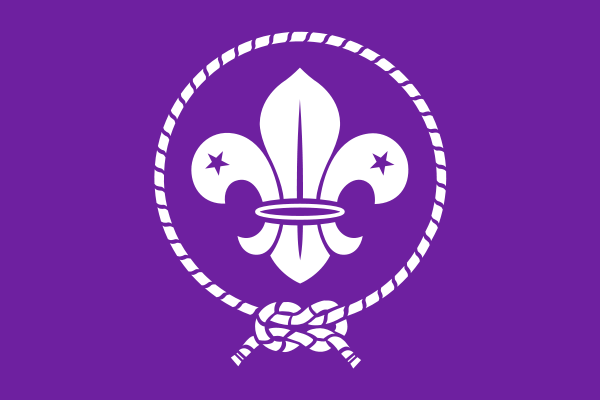
The World Organization of the Scout Movement (WOSM) is the international organization that governs most national Scout Organizations, with 31 million members worldwide. WOSM was established in 1920 and has its headquarters at Geneva, Switzerland. It is the counterpart of the World Association of Girl Guides and Girl Scouts
The WOSM is comprised of 6 regions: Africa, Arab, Asia-Pacific, Eurasia, Europe, and Interamerica. The 6 geocaches in the WOSM series are dedicated to each of these regions.
In 1997, WOSM created the Eurasian Region to assist in the rebirth of Scouting in the 12 former Soviet Republics: Armenia, Azerbaijan, Belarus, Georgia, Kazakhstan, Kyrgyzstan, Moldova, Russia, Tajikistan, Turkmenistan, Ukraine, and Uzbekistan. Several of the organizations in the Region were borne from existing Scouts-in-Exile organizations. Russian was made the working language, and eight Scouting manuals and handbooks have been published, all in Russian. A quarterly periodical, also in Russian, is printed in the branch office in Moscow.
Country Profile: Russia
1908 to 1922
In 1908, Baden-Powell's book Scouting for Boys came out in Russia by the order of Tsar Nicholas II. It was called Young Scout. On April 30 1909, a young officer, Colonel Oleg Pantyukhov, organized the first Russian Scout troop in Pavlovsk, a town near Tsarskoye Selo. In 1910, Baden-Powell visited Nicholas II.
In 1914, Pantyukhov established a society called Russian Scout. The first Russian Scout campfire was lit in the woods of Pavlovsk Park in Tsarskoye Selo. A Russian Scout song exists to remember this event. Scouting spread rapidly across Russia and into Siberia, and by 1916, there were about 50,000 Scouts in Russia. Nicholas' son Tsarevich Aleksei was a Scout himself.
In 1917, the October Revolution, followed by the Russian Civil War effectively brought an end to Scouting on Russian soil, replaced by state youth organizations.
However, Russian Scouting kept going in exile as the National Organization of Russian Scouts in several countries, including China and Australia, and was recognized as a Member of the World Organization of the Scout Movement in 1925.
After 1990
The Scout movement began to reemerge and was reborn within Russia in 1990, when relaxation of government restrictions allowed scouting organizations to be formed.
Over time, several Scout associations were actively supporting the growth of Scouting in Russia, and served Scouts with regards to persuasion of faith, national orientation and geography.
At the end of the 1990s, several of the associations formed the All-Russian National Scouting Organisation (ARNSO), guided by WOSM. In 2000, ARNSO became a member of WOSM.
The Cache is at: 44.39.ABC 88 05.DEF
The WOSM created the Eurasian Region in 199A.
Baden-Powell’s book Scouting for Boys was published in Russia in 19B8.
Although Scouting stopped in Russia after the 191F revolution, it existed in exile and was recognized by the WOSM in 19C5
By 191D, there were about 50,000 Scouts in Russia.
Scouting was reborn in Russia in 19E0.
You can check your answers for this puzzle on GeoChecker.com.